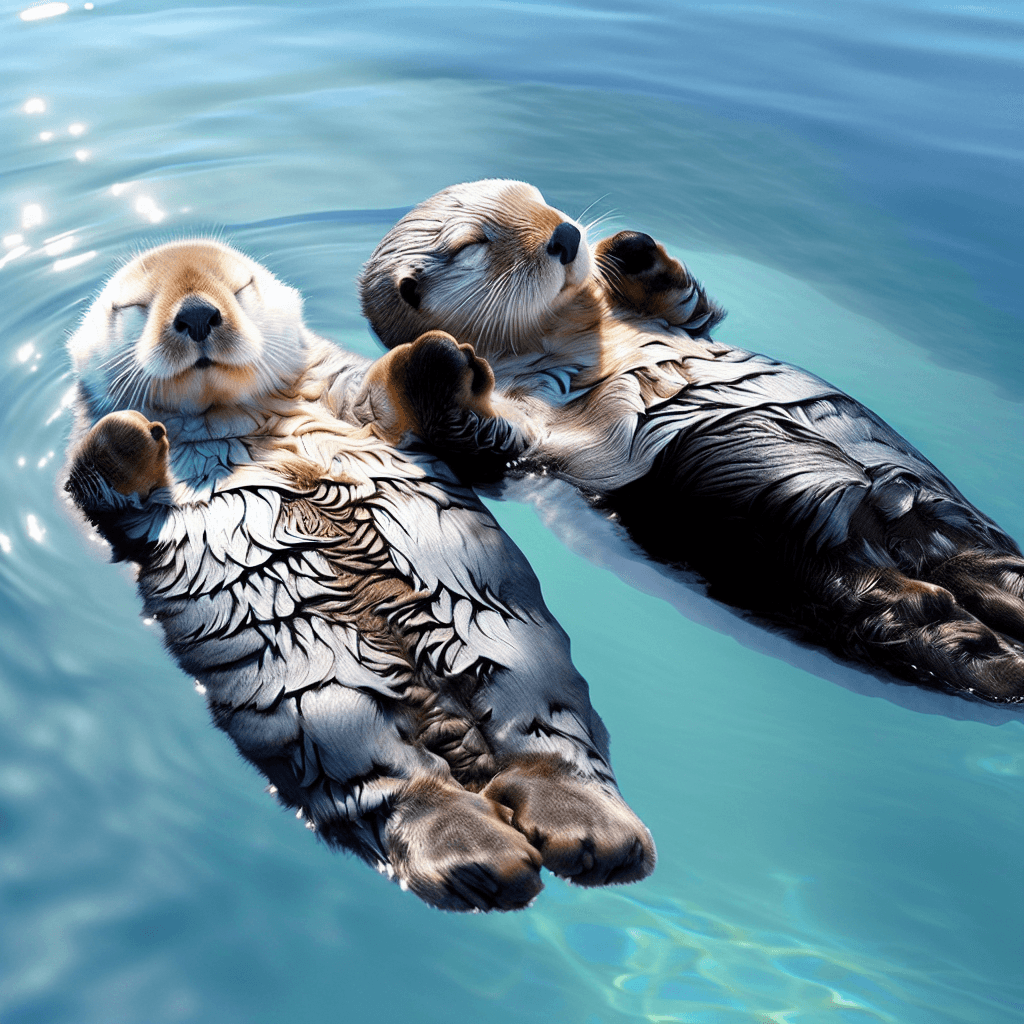Why do sea otters hold hands while they are sleeping
It's more than just an adorable habit; for sea otters, holding hands is a brilliant survival tactic that keeps their families from drifting apart in the open ocean.


Too Long; Didn't Read
TLDR: Sea otters hold hands while sleeping to keep from drifting away from each other in the water.
More Than Just Cute: The Scientific Reason Why Sea Otters Hold Hands While They Are Sleeping
It’s an image that has melted countless hearts on the internet: two sea otters floating peacefully on their backs, paws tightly clasped as the gentle ocean waves rock them to sleep. This endearing behavior often makes us smile, but is it a sign of affection, or is there a more practical reason behind it? While it certainly looks adorable, the act of holding hands is a critical and ingenious survival strategy for these marine mammals. This post will explore the fascinating science behind why sea otters hold hands, revealing how this behavior is essential for their safety, social structure, and survival in the vast, ever-moving ocean.
The Ultimate Anchor: Preventing Drift
The primary reason sea otters hold hands is remarkably simple and pragmatic: to keep from drifting apart. Sea otters spend most of their lives in the water, including when they eat, play, and sleep. When it's time to rest, they float on their backs, a behavior known as "rafting." However, the open ocean is not a calm, static environment. Currents, tides, and winds can easily separate a resting group, scattering them across the water.
By holding hands, or "linking," with one another, they form a stable raft. This collective unit is much more resistant to being broken up by the motion of the water. It’s a natural and effective way to ensure that the group stays together while its members are vulnerable and asleep. This is particularly crucial for mothers and their pups, who need to remain in constant contact. Losing track of family members in the expansive ocean could be a life-threatening situation.
Nature's Safety Blanket: The Role of Kelp
Hand-holding isn't the only trick sea otters have to stay put. They have also mastered the use of their environment to create a safe resting place. Another common technique they employ is wrapping themselves in giant kelp. The long, sturdy fronds of kelp are anchored to the ocean floor, acting as a natural mooring line.
An otter will often roll itself up in a strand of kelp one or more times before dozing off. This keeps it securely in one spot, preventing it from being swept away by a strong current or out to sea. In many cases, sea otters will combine these strategies. A large raft of otters might anchor themselves within a dense kelp forest, with individuals also holding hands for extra security. This double-layer of protection showcases their remarkable ability to adapt to their challenging marine habitat.
A Mother's Grip: Protecting the Pups
The bond between a mother sea otter and her pup is incredibly strong, and hand-holding plays a vital role in their relationship. A newborn sea otter pup is born with fur so dense that it is too buoyant to dive, making it entirely dependent on its mother for food and protection. While the mother dives for food, she will often leave her pup floating on the surface, sometimes wrapped in kelp for safety.
When they rest together, however, a mother will almost always be in physical contact with her pup. She may let the pup rest on her chest or float alongside her, but holding hands is a common way to ensure her vulnerable offspring doesn’t drift away while she is sleeping. This constant touch provides security and prevents a small, helpless pup from becoming lost at sea. It's a fundamental aspect of their parental care and essential for the pup's survival in its first few months of life.
In Conclusion: A Strategy for Survival
The sight of sea otters holding hands is far more than just a cute quirk; it is a testament to their intelligence and evolutionary adaptation. This behavior is a cornerstone of their survival strategy, allowing them to rest safely in a dynamic and often-unpredictable environment. By linking together to form rafts and using kelp as natural anchors, they prevent separation, protect their young, and maintain their social groups. So, the next time you see a photo of these charming creatures clasping paws, you can appreciate not only the endearing image but also the brilliant and vital survival instinct that lies behind it.
More Articles

Why do movie punches sound so much crunchier and louder than real ones?
That sickening, bone-crunching punch you hear in the movies is a lie, and the secret ingredient is probably sitting in your refrigerator right now.

What makes a beer bottle suddenly foam over just from a light tap on top?
It’s not magic, it’s a shockwave; discover the explosive physics that turns a gentle tap on your beer bottle into an instant foamy geyser.

Why do police officers touch the back of a car during a traffic stop?
It’s not a random habit; that simple touch is a calculated, old-school tactic designed to leave a crucial and potentially life-saving piece of evidence behind.